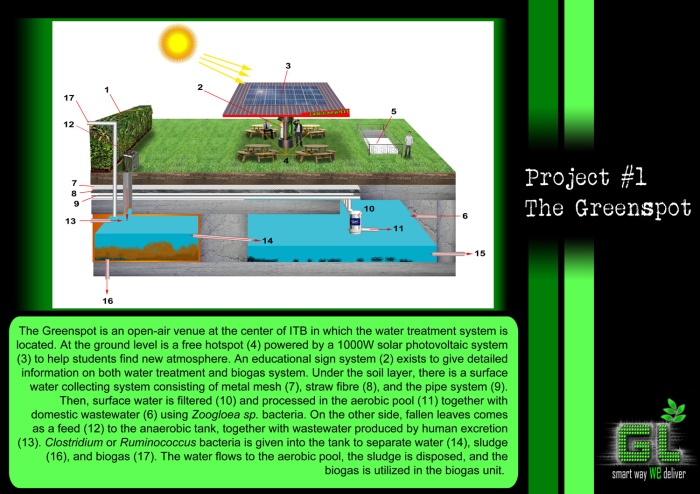For the first phase, every team were challenged to provide an analysis for a telecommunication provider with a large number of customer in Indonesia, XL AXIATA. Besides the analysis, we were also asked to come up with our creativity to provide an alternate strategic plan for the future of XL AXIATA. All the data had to be collected by each team by themselves, the committee did not provide the data needed.
We collected data about XL AXIATA as much as we could. We used a few annual report of XL AXIATA, company public presentation about financial position, and also the annual report of the other telecommunication provider which are the competitior of XL AXIATA. Using the data as the foundation of the analysis, we came up with internal analysis and external analysis of XL AXIATA. Then, we started to formulate the alternate strategies with the help of TOWS matrices.Then, we built a marketing programme which were developed from the choosen alternate strategies. We submitted our report and waited for the top 10 teams announcement.
The announcement which we had been waiting so long was delayed for one day. But, unfortunately, KAIZEN ITB came up in the committee's website. Our proposed alternate strategies were in the 5th position from about 40s teams. Then, we were invited to join the final phase in Fakultas Ekonomi, Universitas Indonesia.
The day then came, the best 10 teams were welcomed with the final phase which was held in 2 stages each for one day. On the first day, all teams, one-by-one had to present their alternate strategies in front of the judges. Becoming the forst team to do the presentation, we had to wait for about 2-3 hours without doing anything. Luckily, our LOs, XXX, agreed to accompany us to visit the Industrial Engineering Department in Universitas Indonesia. Briefly, we had a very nice experiences doing lab touring with the help of our friends in TI UI.
After all teams finished to present their alternate strategies, all the teams gathered again to start the last activities in the first stage of the final phase which was business simulation. We were challenged to introduce a few original products from Depok's SME. We are supposed to sell them using the right methods to get the highest profit. The products were Aloevera Jelly Drink, Jackfruit Juice, Tissue Box, Batik Chocolates, and also organic sweet and red ginger powder. It was not an easy and smooth way to sell all the products. After trying so hard to sell all the products, we finally sold all our products out with a big profit margin.
The commitee then started to calculate all our scores accumulated from the presentation and the simulation games. They came up with the announcement of 5 best teams to continue their journey into the second stage which held in the next day. And again, we sat in the second position behind ITS Team and in front of 2 UI Team and 1 UGM Team.
The final stage in the final phase then came and all of the teams had to provide an analysis and came up with a solution for a SME in Depok, Delira, which products were tried to be sold by the teams in the previous day. First, we listened to the presentation from Delira management, Ibu Ayu. A lot of data and hypothesis were collected and listed carefully during the presentation. Every teams were also allowed to ask 3 question to Delira. We decided to ask critically about these things,
- The management thought about Delira in the future (Goal)
- Each of management involvement in Delira, how far and how deep (Management Commitment)
- Current and future potential selling channel (Market size - penetration)
Each team got 30 minutes to construct the solution in only 2 pieces of A3 paper. We used a few tools to help, which were
- Profit Trees to focus our solution on Delira's critical entities.
- Porter Five Forces to draw Delira business together with its 5 forces.
- 4P Marketing Structure to come up with the solution.
Besides the marketing problem which affected the selling price and the limitedness of sold product, the other problems are reflected in the profit trees which were the uncertain cost of raw material given by the farmers. These problems would be solved using the supply chain approach together with the porter five forces.
So, our solution was structurally like this.
- Target again the healthy-minded customer segment.
- Use appropriate channel of distribution such as sport center, etc (ease of reaching segment).
- Set the exact selling price to end-customer in the level of Rp 5000 instead of Rp 2000.
- The increase of selling price required Delira to redesigned their product to fit into this lecel of price. Starting with the quality of jelly drink, plastic packaging, and label had to be desgined very well and fit enough for both the selling price and the product position as a healthy drink.
- Start promotion activities actively, take benefit from healthy icon, say it doctor, use online marketing, take customer feedback, etc.
- Check for an opportunity to reach a new geographical market.
- The last one, contract the farmer of aloevera. State that Delira are committed to buy their aloevera in a slightly higher price but constant! State also that the farmers had to prioritize Delira as their main customer and so Delira had an assurance about raw material supplies.
That's all that bring us to reach the first prize after again presenting our thoughts. It was a very wonderful learning experiences with a lot of excitement and remarkable experiences.









0 comment(s):
Post a Comment
comment